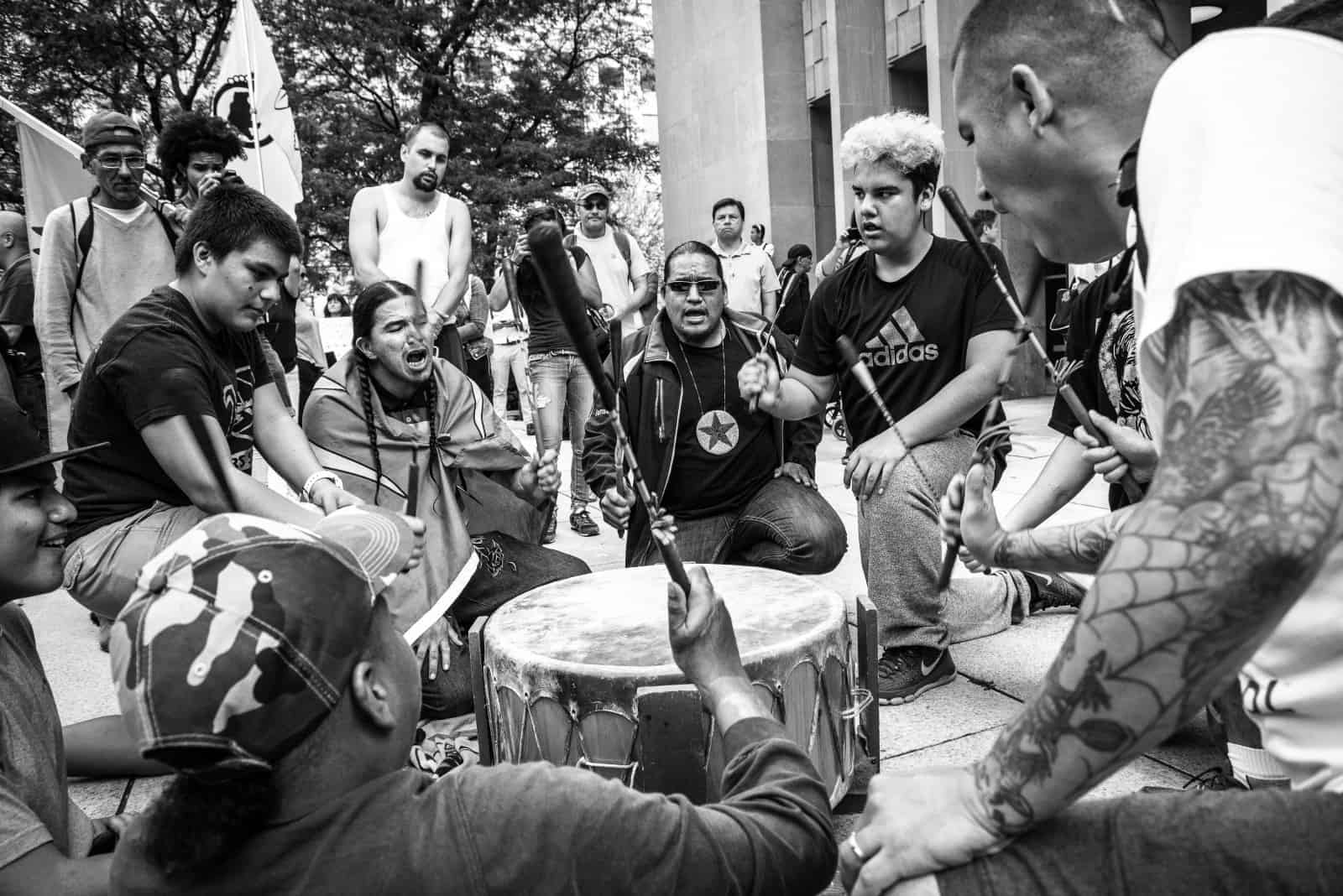- About
- Research
-
-
- Special Reports & Features
- Pretendians and Publications: The Problem and Solutions to Redface Research
- Pinasunniq: Reflections on a Northern Indigenous Economy
- From Risk to Resilience: Indigenous Alternatives to Climate Risk Assessment in Canada
- Twenty-Five Years of Gladue: Indigenous ‘Over-Incarceration’ & the Failure of the Criminal Justice System on the Grand River
- Calls to Action Accountability: A 2023 Status Update on Reconciliation
- Data Colonialism in Canada’s Chemical Valley
- Bad Forecast: The Illusion of Indigenous Inclusion and Representation in Climate Adaptation Plans in Canada
- Indigenous Food Sovereignty in Ontario: A Study of Exclusion at the Ministry of Agriculture, Food & Rural Affairs
- Indigenous Land-Based Education in Theory & Practice
- Between Membership & Belonging: Life Under Section 10 of the Indian Act
- Redwashing Extraction: Indigenous Relations at Canada’s Big Five Banks
- Treaty Interpretation in the Age of Restoule
- A Culture of Exploitation: “Reconciliation” and the Institutions of Canadian Art
- Bill C-92: An Act respecting First Nations, Inuit, and Métis Children, Youth and Families
- COVID-19, the Numbered Treaties & the Politics of Life
- The Rise of the First Nations Land Management Regime: A Critical Analysis
- The UN Declaration on the Rights of Indigenous Peoples in Canada: Lessons from B.C.
- View all reports.
- Special Reports & Features
-
-
- Yellowhead School
- The Treaty Map
- LIBRARY
- Submissions
- Donate
FEW SEEM TO REALIZE the rapid pace of legislative and policy change proposed by the Liberal government on Indigenous issues; from Indian Status to fiscal relations, self-government and land claims. Most revolve around a proposed Rights, Recognition and Implementation Framework legislation, coming sometime this year.
Last week, Yellowhead Institute published a report called Canada’s Emerging Indigenous Rights Framework: A Critical Analysis to help break it all down. But one area that requires additional context is around the ongoing movement away from the Indian Act.
There is no question that the Indian Act must go. Its assimilation provisions, restrictions on mobility, violating nearly every treaty, aggressive patriarchy, and the dismantling of authentic First Nation governance models is all well documented. So the question becomes which path do we take from here?
Of course there has been change and proposed changes in the past.
After First Nation political organizing following World War Two, a Liberal Government of Louis St. Laurent introduced wholesale amendments to the Act in 1951. Most of the cultural and mobility prohibitions were lifted. However, St. Laurent refused to address First Nation demands for self-determination.
Then in 1968-1969, another Liberal Government, this time led by Pierre Trudeau, promised progressive movement away from the Act but delivered the much maligned White Paper on Indian Policy, a plan to effectively liquidating First Nation rights under the auspices for improved service delivery. The White Paper was rejected nearly universally by First Nations.
Jean Chretien’s Liberals attempted reform with the 2002 Governance Act, but it too was rejected by First Nations because it maintained an interventionist role of the Minister of Indian Affairs, entrenched the band council system (with added accountability measures), and excluded First Nation women.
In these cases, Liberal governments consulted extensively with First Nations (each proposal was formally introduced after a year of dialogue); First Nations greeted the initial
consultation with optimism; and finally, there was profound disappointment when treaty rights, genuine self-determination or First Nation input generally was ignored.
This very brief context is instructive as we find ourselves once again in familiar circumstances: a new Liberal government is attempting to remove the Indian Act, there is a consultation period, though truncated, and an apparent “nation-to-nation” collaboration. If history is a guide, the final act here is betrayal.
In the meantime, there is also one key difference in the current version of this pattern.
The Indian Act is no longer the monolith it once was. Rather, since the introduction of a 1985 amendment allowed First Nations to take control of band membership, there has been a quiet proliferation of Indian Act exit opportunities. These exits include subsidiary pieces of legislation that neutralize certain provisions in the Indian Act. From the First Nations Land Management Act (1999) to the First Nation Election Act (2015). As more elected band council’s enter into these processes the Indian Act becomes unbundled.
The current government’s approach, at least what we can determine of it at this point, takes advantage of this fragmentation.
A lesson has been learned: the wholesale rapid removal of the Indian Act without alternatives will be met with resistance. So instead, when the government introduces the Rights Recognition and Implementation Framework legislation, the exit will be optional, though strongly encouraged, and targeting regional groups or individual bands. In this way, First Nations can be more easily divided.
Elected band councils who go through a capacity building process, financial management certification, and service delivery re-organization will be eligible for a narrow version of self-government outside the Indian Act. For those not deemed eligible or those who continue to resist, the Indian Act will remain in place.
A new means to scrap the Indian Act has been discovered. But the ends appear the same. For First Nation communities and elected Chief and Councils, caution is merited. And for elected MPs, within or outside government, transparency, accountability and honesty on this “new” approach is overdue.
This brief was originally published by The Hill Times on June 14, 2018.
Citation: King, Hayden. “Wholesale Rapid Removal of the Indian Act without Alternatives will be Met with Resistance.” Yellowhead Institute. 16 June 2018, https://yellowheadinstitute.org/2018/06/16/wholesale-rapid-removal-of-the-indian-act-without-alternatives-will-be-met-with-resistance/



